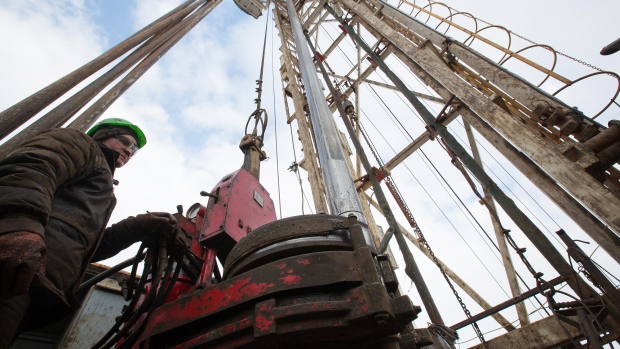Dec 18, 2018
Oil spirals below US$47 as dark clouds envelop demand outlook
, Bloomberg News

Economic jitters and surging supplies from the U.S. to Russia hammered oil again, with crude suffering its biggest decline in more than three weeks.
Futures slid 7.3 per cent in New York on Tuesday, putting prices on track for their worst quarterly loss since the start of the last oil market crash in late 2014. Anxieties over growth swirled as Chinese President Xi Jinping appeared to push back against U.S. President Donald Trump in a Beijing speech and American investors braced for an interest-rate hike. Another late-afternoon fizzle for U.S. equities added to the dour outlook.
Prices slipped another 31 cents after the settle as the industry-funded American Petroleum Institute was said to report U.S. crude stockpiles rose 3.45 million barrels last week.
“Sentiment is negative, it’s low-volume trading and we’re not getting any good news," said Ashley Petersen, lead oil analyst at Stratas Advisors in New York.
A U.S. government report Monday forecast surging shale-oil production, adding to worries about a glut. In Moscow, Russian Energy Minister Alexander Novak said production is rising, although the country is preparing to implement output curbs to conform with an OPEC+ accord.
Crude’s mired in a bear market amid growing skepticism that cuts by the Organization of Petroleum Exporting Countries and its allies will be deep enough to prevent a surplus in 2019. The group’s efforts to balance the market have been undermined by the the relentless growth in U.S. shale, which veteran crude trader Andy Hall said is making it harder to predict global supplies.
West Texas Intermediate for January delivery fell US$3.64 to US$46.24 a barrel on the New York Mercantile Exchange, the lowest since Aug. 30, 2017. Total volume traded Tuesday was about 23 per cent above the 100-day average.
In Midland, Texas, heart of the Permian shale basin that’s driven the U.S. boom, prices broke below US$40 a barrel, as buyers factored in pipeline shortages that have pushed up transportation costs. Drillers “will likely see harsher cuts to capital plans if WTI remains below US$50,” Houston investment bank Tudor Pickering Holt & Co. warned in a note to clients.
Brent for February settlement lost US$3.35 to US$56.26 on London’s ICE Futures Europe exchange. Even so, the front-month future settled at a premium to the next contract for the first time since Nov. 5. The global benchmark crude traded at a US$9.66 premium to WTI for the same month.
Bearish trends overwhelmed bullish developments including word that unrest curtailed pumping in Libya’s biggest oilfield. Nonetheless, oil, heating oil and gasoline all sank near or below technical support levels, said Stephen Brennock, an analyst at PVM Oil Associates Ltd. in London.
Futures contracts “are in a world of pain,” he wrote in a note to clients.
Other oil-market news Gasoline futures fell 4.3 per cent to US$1.3505 a gallon in New York. The price plunge has wells in some parts of the Permian Basin below break-even levels, threatening to put the brakes on the record flow from the prolific field. Saudi Arabia expects to earn more from oil next year, an optimism that defies forecasts and contrasts with the kingdom’s history of conservative assumptions.



